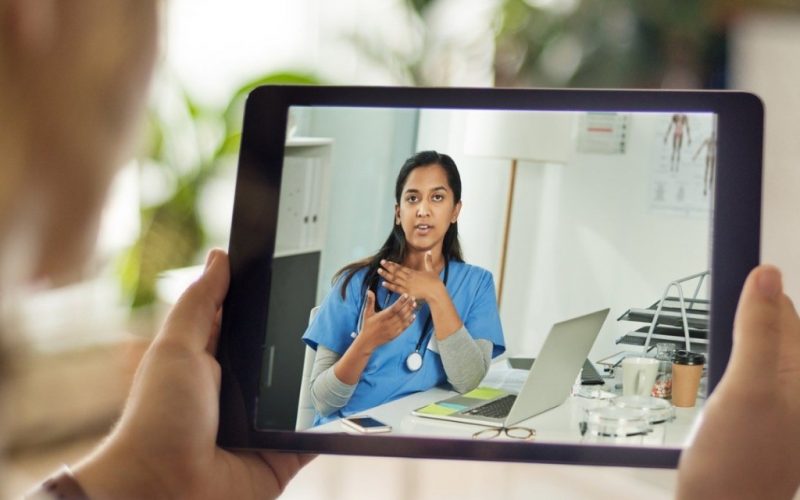Telehealth is a recent development in the medical eco system, it was just some fifty years back that few hospitals around the world started practicing or experimenting with telehealth with the aim to reach patients in remote locations. Ziqitza Healthcare, explains that telehealth in recent years has witnessed increased adoption due to rapid development and growth, and witnessed exponential growth during the COVID-19 pandemic outbreak.
As per the Centers for Medicare and Medicaid Services (CMS), telemedicine can be described as ‘a service that aims to improve a patient’s health by permitting a two-way, real-time interactive communication between the patient and the physician from two different sites’. Ziqitza, elaborates that although similar in connotations, telehealth and telemedicine must not be used interchangeably. Telehealth technically means usage of telecommunications and information technology for diagnosis, consultation, etc. from a distance. Ziqitza Healthcare ltd, further explains that improvements in technology have dramatically increased the accessibility and quality of care that is available digitally, which in turn has increased opportunities for the medical practitioners to connect with patients in remote areas. Ziqitza Healthcare further expands on the distinction between telehealth and telemedicine and states that Telehealth involves general health services which includes public health services, whereas telemedicine refers to specific kind of telehealth wherein a clinician provides some kind of medical services.
Ziqitza Rajasthan, states that in the face of the current COVID-`9 pandemic outbreak, medical practitioners and healthcare service providers were forced to adopt and utilize various telehealth tools at their disposal. During the current pandemic, telehealth services played an intrinsic and major role in ensuring that quality healthcare was accessible for everyone, especially the remote areas of the nation. Ziqitza Limited applauds the telehealth service providers for their efforts for ensuring that affordable care was available for patients while maintaining physical distance for the safety of both patients and providers.
ZHL Rajasthan lists down few advantages of telehealth for easy reference:
- Decreases strain on healthcare system: Telehealth can considerably reduce the time that gets generally wasted in travelling to the clinic and waiting there for the appointment. With the increase in population, these issues can get magnified and this is where telehealth has an advantage.
- Reduces the rural barriers: The healthcare distribution in our country faces a huge challenge. Around 75% of India’s population resides in rural areas with limited access to primary healthcare services. Around 620 million rural Indians are devoid of primary healthcare services and require care from doctors based in metropolitan cities. Therefore, telehealth could be the solution here. Telehealth offers fast exchange of information, remedial measures, consultations, etc. among healthcare providers, patients, and the doctors.
- Assists patients with limited mobility: Ziqitza Limited Rajasthan believes that Telehealth is most beneficial to people who experience limited mobility such as patients with disability, or senior citizens, or patients with limited access to transportation. Remote access to healthcare services acts as a tool that improves the quality of life.
- Expedite Timely Care: Telehealth consultation can cut down on unnecessary trips to emergency rooms. A quick telehealth consultation can expedite timely care in case the diagnosis requires urgent hospitalization or visit to the emergency room. It can save time in terms of visits to a physician, the online consult can quickly judge and the patient can be referred to the emergency room immediately.
Ziqitza HealthCare limited, explains that with the onset and advancement of mobile and electronic technologies, telehealth has become accessible and this increase has played a critical role in increased adoption of telehealth services across the country. The usage of the internet is now mainstream in healthcare. The online availability of medical records allows for easy storage and easy access to medical information for both the medical care providers and the patients. By leveraging internet services patients can view their test results from the convenience of their homes, order medications refill and even consult with the physicians directly. People can now interact with medical practitioners face-to-face in real time via live video services, this is also known as synchronous telemedicine. Telehealth services also give the freedom and ability to share imaging, labs or examination results. These can be stored and examined on a later date, also known as asynchronous telemedicine.
India is not new to telemedicine, it has always been there, however, the COVID-19 pandemic forced everyone’s hands and spurred people towards acceptance of it and adoption of video-consultations and other new-age platforms for medicines, care and consultations. While COVID-19 exposed gaps in healthcare, it also offered opportunities and telehealth is one such opportunity. The nation must look at increased adoption of it and the policymakers must enable an environment for its advancement.


